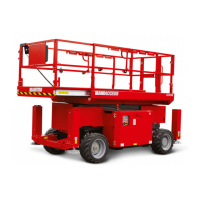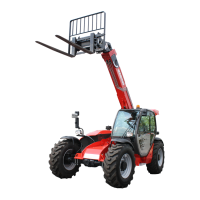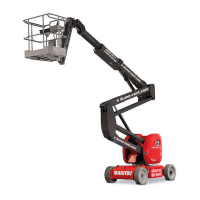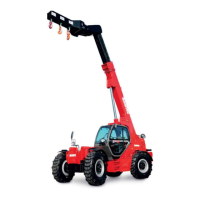1-12
STACKY operating and safety instructions 2012.12
INSTRUCTIONS FOR HANDLING A LOAD
A - CHOICE OF TOOL (EXCEPT STACKY 14)
Only tools approved or authorised by the manufacturer are to be used on its stackers.
Check that the tool is appropriate for the task to be performed.
Certain specic applications require non-standard stackers to be used. These stackers have dedicated tools that
are not interchangeable.
Make sure the tool is correctly installed and secured to the stacker’s carriage.
Make sure that your stacker tools work properly.
Do not exceed the rated capacity of the tool.
Never lift a load in a sling without the tool intended for this purpose, as the sling risks to
slip (see : INSTRUCTIONS FOR HANDLING A LOAD : G - TAKING UP AND LAYING DOWN
A SUSPENDED LOAD).
B - WEIGHT AND CENTRE OF GRAVITY OF THE LOAD
You must know the weight and the centre of gravity of the load before you pick it up.
Never lift a load without knowing its weight and centre of gravity.
The maximum lifting capacity is indicated on the name plate located on the right-hand
side of the stacker’s xed mast.
The eective load capacity and the centre of gravity of the load are specic to the tool
tted on the stacker. These values are indicated on each tool’s name plate.
The lifting height and the centre of gravity dictate the maximum load that can be lifted.
These values are indicated on the stacker manufacturer’s plate located under the tiller
arm.
For irregularly shaped or asymmetric loads, determine the centre of gravity in the
transverse direction before handling and position the centre of gravity within stacker’s
longitudinal centreline (g. B1 et B2).
It is forbidden to directly place onto the fork or the tool, by external means, a load that
exceeds the eective capacity.
It is forbidden to move a load heavier than the eective capacity indicated
on the tool manufacturer's plate.
For loads with a moving centre of gravity (such as liquids), take account of the
variations in the centre of gravity in order to determine the load to be handled
and be vigilant and take extra care to limit these variations as far as possible.
C - PICKING UP A LOAD ON THE GROUND
- Approach the stacker perpendicular to the load, with the forks in the down position
(g.C1),
- Position the stacker on the centreline of the load, unless the volume of the load
is asymmetric (g. C2),
- Insert the fork under the load as far as it will go,
- Raise the load.
The load must be perfectly balanced, wedged or tied to its support to avoid any risk
of slipping or overturning.
Never lift a load from which certain elements could become detached and injure
the operator.
Never lift a load with a single fork arm.
Never lift a person with the stacker.
The operator must ensure that the arms are suciently widely spaced to ensure
the stability of the load.
The load must not extend more than 50 mm beyond the end of the fork.
The width of the load must not exceed two times the maximum external width
of the fork.
When using adjustable forks, beware of the risk of the risks of trapping
or crushing limbs when manually adjusting the arms of the forks.
CdG
B1
B2
C1
C2

